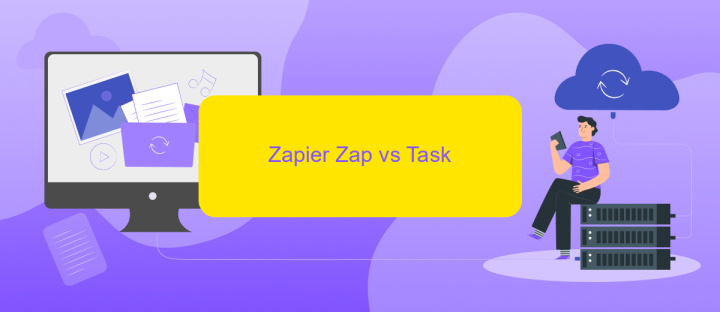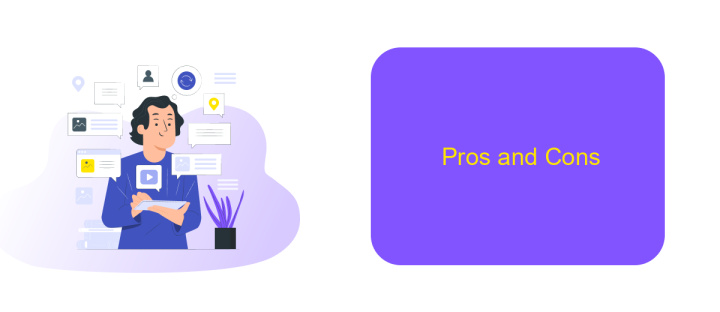Zapier Zap Vs Task
In the world of automation, Zapier's "Zaps" and "Tasks" are essential concepts for streamlining workflows. Zaps are automated workflows connecting your apps, while Tasks are the individual actions executed within each Zap. Understanding the differences and functionalities of Zaps and Tasks is crucial for optimizing your productivity and leveraging Zapier to its full potential. This article delves into their distinct roles and uses.
What is Zapier?
Zapier is a powerful automation tool that connects your favorite apps and services to streamline workflows and save time. By creating automated workflows called "Zaps," users can trigger actions in one app based on events in another, without needing to write any code. This makes it easy to automate repetitive tasks and focus on more important work.
- Automate routine tasks between different apps
- Create custom workflows without coding
- Save time and increase productivity
- Integrate with over 3,000 apps and services
In addition to Zapier, another excellent tool for setting up integrations is ApiX-Drive. ApiX-Drive allows users to connect various services and automate data transfers seamlessly. By using tools like Zapier and ApiX-Drive, businesses can enhance their efficiency and reduce manual effort, leading to more streamlined operations and better productivity.
What is Task?

A Task in the context of Zapier refers to a single action that Zapier performs as part of an automated workflow, known as a Zap. Each Task represents a specific operation, such as sending an email, updating a spreadsheet, or creating a new record in a CRM. When you set up a Zap, you define a series of steps that the automation will follow, and each step corresponds to a Task. The number of Tasks you use can affect your subscription plan, as different plans offer different Task limits.
For those looking to streamline their integrations even further, services like ApiX-Drive can be incredibly useful. ApiX-Drive offers a user-friendly platform for setting up various integrations without needing extensive technical knowledge. By using ApiX-Drive, you can connect multiple applications, automate data transfers, and manage workflows efficiently. This service simplifies the process, making it easier for businesses to automate their operations and focus on more strategic tasks.
Zapier Zap vs Task

When exploring automation tools like Zapier, it's essential to understand the difference between Zaps and Tasks. Zaps are automated workflows that connect your apps and services, allowing them to work together seamlessly. Each Zap consists of a trigger and one or more actions. For example, a trigger could be receiving an email, and the action could be saving the attachment to Google Drive.
- Zap: An automated workflow that connects different apps and services.
- Task: A single action within a Zap, such as sending an email or updating a spreadsheet.
ApiX-Drive is another excellent option for setting up integrations and automations. It offers a user-friendly interface and supports a wide range of apps and services, making it easier to create complex workflows without any coding knowledge. Whether you choose Zapier or ApiX-Drive, understanding the distinction between Zaps and Tasks will help you make the most of these powerful automation tools.
Pros and Cons

Zapier is a popular automation tool that allows users to create workflows, known as Zaps, to automate repetitive tasks between different applications. On the other hand, Tasks are the individual actions that make up these Zaps. Understanding the differences between Zaps and Tasks can help users optimize their workflows effectively.
One of the main advantages of using Zaps is their ability to streamline complex processes by connecting multiple apps and automating tasks seamlessly. However, each Task within a Zap counts towards your monthly usage limit, which can be a drawback for those on a budget.
- Pros:
- Automates repetitive tasks
- Connects multiple applications
- Easy to set up and use
- Cons:
- Task limits can be restrictive
- Higher costs for premium features
- Occasional integration issues
For users seeking an alternative, ApiX-Drive offers a robust solution for setting up integrations with various services. It provides a user-friendly interface and a wide range of supported applications, making it a viable option for automating workflows efficiently.
Conclusion
In summary, understanding the differences between Zaps and Tasks in Zapier is crucial for optimizing your workflow automation. Zaps serve as the overarching automation structure, connecting various apps and triggering actions based on specified events. Tasks, on the other hand, are the individual actions executed within each Zap. By effectively managing both, you can streamline your processes and enhance productivity.
Moreover, services like ApiX-Drive offer additional flexibility and ease in setting up integrations. ApiX-Drive allows users to connect multiple applications effortlessly, providing a user-friendly interface that simplifies the automation setup. Whether you are a novice or an experienced user, leveraging such tools can significantly improve your automation capabilities, making it easier to maintain and scale your integrations as your business grows.
- Automate the work of an online store or landing
- Empower through integration
- Don't spend money on programmers and integrators
- Save time by automating routine tasks
FAQ
What is the difference between a Zap and a Task in Zapier?
How do I minimize the number of Tasks used in a Zap?
Can I see how many Tasks my Zaps have used?
What happens if I exceed my Task limit in Zapier?
Are there alternatives to Zapier for automation and integrations?
Apix-Drive will help optimize business processes, save you from a lot of routine tasks and unnecessary costs for automation, attracting additional specialists. Try setting up a free test connection with ApiX-Drive and see for yourself. Now you have to think about where to invest the freed time and money!


